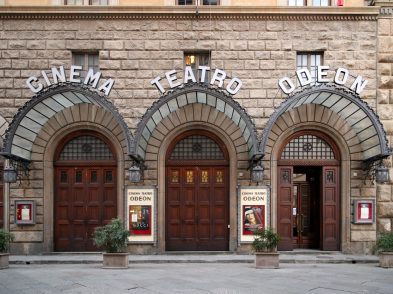The first of the five Fendi sisters, Paola, entered the family business in 1946. She was soon joined by her other four sisters Carla, Anna, Franca, and Alda. They were following in the footsteps of their mother, Adele Casagrande who had opened a leather and fur store and workshop in the centre of Rome in 1918, which changed its name to Fendi when Adele married Edoardo Fendi in 1925. Business was good and, in 1932, they opened a second shop.
But, it was the five sisters who would make Fendi the world famous name in fashion it is today. On the death of their father in 1954, the sisters, together with their mother, inherited the business. Each took charge of a separate sector: Paola (born in 1931) was responsible for furs; Anna (born in 1933) looked after leather goods; Franca (born in 1935) took care of customer relations; Carla (born in 1937), affectionately known as ‘the General’, became business coordinator; and Alda (born in 1940) concentrated on sales.
Helped by the economic boom in Italy at the time, the Fendi family opened its flagship store in 1964 in via Borgognona, one of Rome’s most elegant streets. In 1965, the sisters began their fortunate and still continuing collaboration with the rising star of Paris fashion, Karl Lagerfeld.
Their first step was to turn the fur coat from a stiff and pompous status symbol largely worn by the middle-aged wives of successful Italian commendatori into a soft and versatile haute couture garment for modern women of all ages. The sisters, using Lagerfeld’s designs, sought new materials and experimented with innovative and immaginative techniques for tanning, dying and working with fur. They did the same with their leather goods, on which they stamped the unmistakable inverted FF logo created for them by Lagerfeld.
The sisters presented their first ready-to-wear fur collection at Palazzo Pitti in Florence in 1969. It represented high-quality workmanship and creativity at affordable prices. Their clothing line was born when they were unable to find the clothes they wanted to show under their furs.
In 1985, to celebrate 60 years in business and 20 years of working with Lagerfeld, Fendi organised a special exhibition at the National Gallery of Modern Art in Rome, the first fashion exhibition ever to be held in a national museum in Italy. A year later, the Italian president nominated Paola Fendi a Cavaliere del lavoro.
In 2006, the American Academy in Rome’s fashion scholarship was established under the auspices of the Fendi Rome Prize, allowing the winner to be able to live in Rome and work at Fendi.
Many Fendi fur coats have appeared on the stage and in films like Visconti’s Gruppo di famiglia in un interno (1974) and L’Innocente (1976), Zeffirelli’s La Traviata (1983), Scorsese’s The Age of Innocence (1993), Parker’s Evita (1996) and in the James Bond movie Die Another Day (2002). Two dresses, donated by the Fendi Archive, were also displayed during the Goddess exhibition held at the Costume Institute at the Metropolitan Museum of Art in New York in May 2003.
Like other Italian fashion families, including Missoni and Beneton, a third generation of Fendi now works in the business. Today, Anna’s daughter, Silvia Venturini Fendi, together with Karl Lagerfeld, is a creative director and designer. In 1997, she created the ‘baguette bag’ which became a cult object and won the coveted Fashion Group International award for accessories in 2000.
In a joint venture with Prada, the French luxury goods conglomerate LVMH which, among the 60 brands it owns includes Luis Vuitton and the champagne company Moet & Chandon, bought 51 percent of the company from the Fendi family in 1999. The idea was that LVMH would run Fendi’s retail business, Prada would take care of production and distribution while the Fendi sisters would remain in charge of design. When Prada ran into financial problems, it decided, in November 2001, to cede its 25.5 per cent share to LVMH, effectively giving it control of the business.
While Bloomingdales was the first American store to start selling Fendi in the US back in 1968, there are now over 100 Fendi shops worldwide and 600 points of sale throughout Italy and abroad. Not surprisingly, as Fendi made its name in fur coats, 32 percent of its business remains in furs and clothing, 40 percent is in accessories and 28 percent in other activities such as licensing things like pens, watches, perfumes, sunglasses and home furnishings. In 2006, its turnover exceeded 300 billion euro, making Fendi the fourth most important prêt-à-porter fashion house in Italy.







